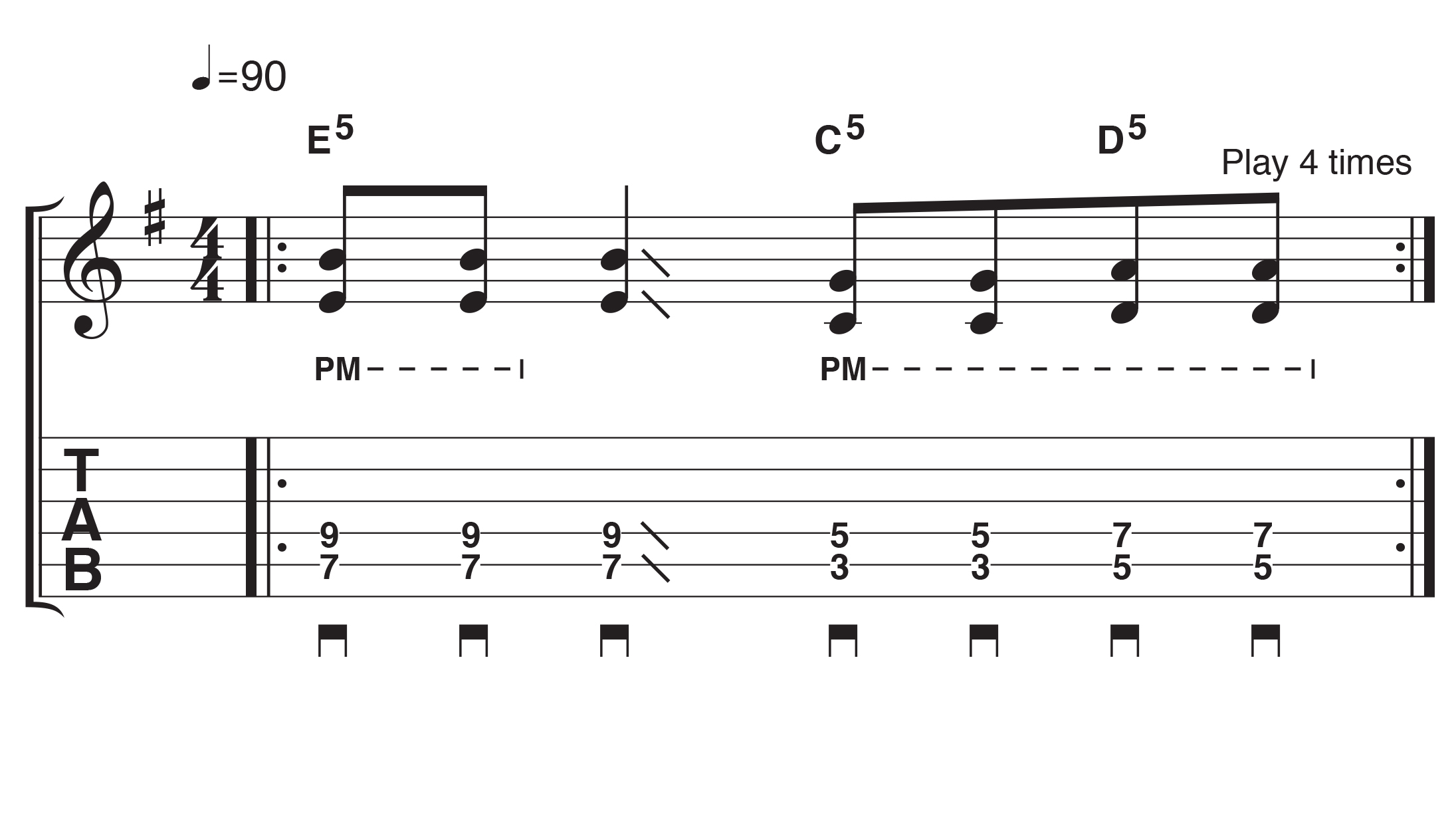4 essential rhythm guitar skills for dividing up the beat
Get to know your eighth-note strumming from your 16th note partial chords in this guitar lesson with tab and audio

Guitar lessons: The 'beat’ is the regular pulse in music that you tap your foot to – and beats are grouped together into bars. Most music has four beats in a bar, which is why people count ‘1 2 3 4’ before a song starts.
Beats are most commonly divided into two or four, giving a potential eight or 16 notes per bar. This way of dividing up the beat is the foundation of rhythm playing. Try out the following examples to understand the process and hone your chops.
1. Eighth-note strumming

Move your hand in a down-up motion, counting ‘1 & 2 & 3 & 4 &’ to maintain an ‘eighth note’ timing. Simply miss the strings on the ‘&’ after beat 1 – this creates a more interesting rhythm.
Eighth-note downstrokes

Upstrokes can feel softer than downstrokes so, if you’re playing heavier styles of music like metal or hard rock, playing downstrokes is the solution. We’re still using eighth notes – just down-picked.
Single-note 16ths

This example uses four notes per beat. Pick with a down-up motion and keep a finger touching the string to produce the muted ‘X’ notes. Simply press down at the right time on the notated frets.
16th-note partial chords

This example expands the 16th-note picking to a strumming action across two strings. You won’t hit the strings on every note but make sure to keep a constant down-up strumming movement going.
7 ways to improve your rhythm guitar tone
Want all the hottest music and gear news, reviews, deals, features and more, direct to your inbox? Sign up here.
Total Guitar is Europe's best-selling guitar magazine.
Every month we feature interviews with the biggest names and hottest new acts in guitar land, plus Guest Lessons from the stars.
Finally, our Rocked & Rated section is the place to go for reviews, round-ups and help setting up your guitars and gear.
Subscribe: http://bit.ly/totalguitar
